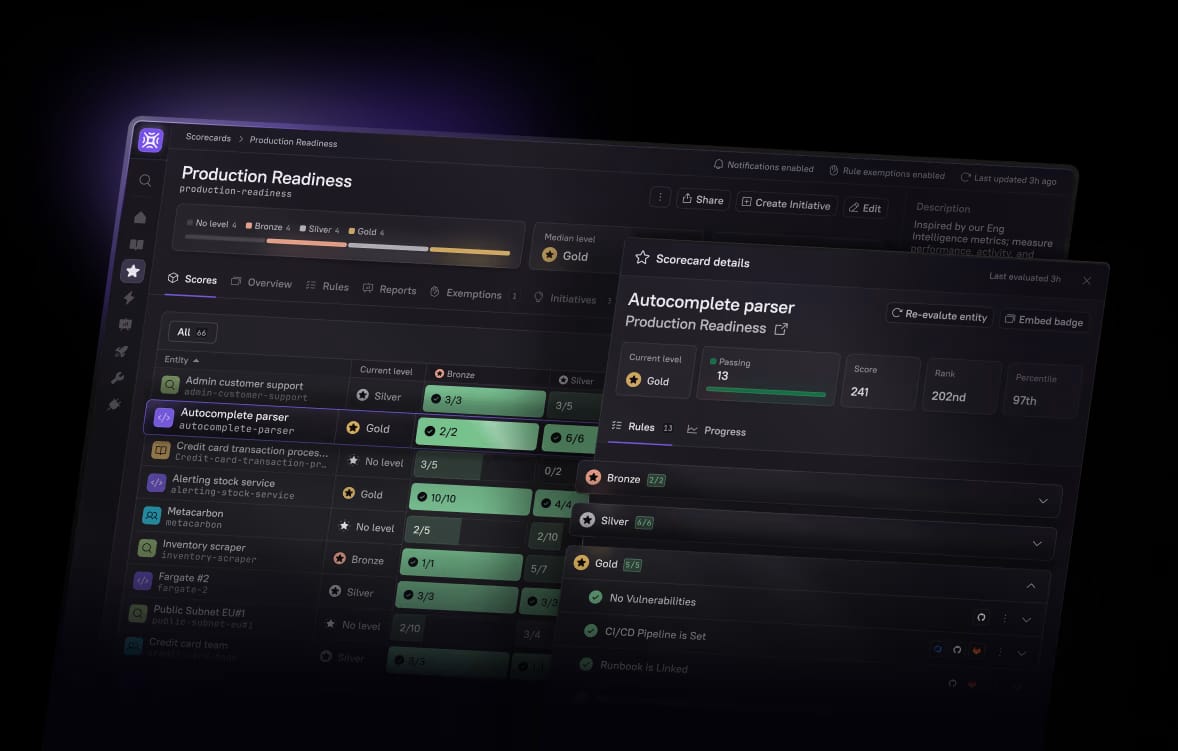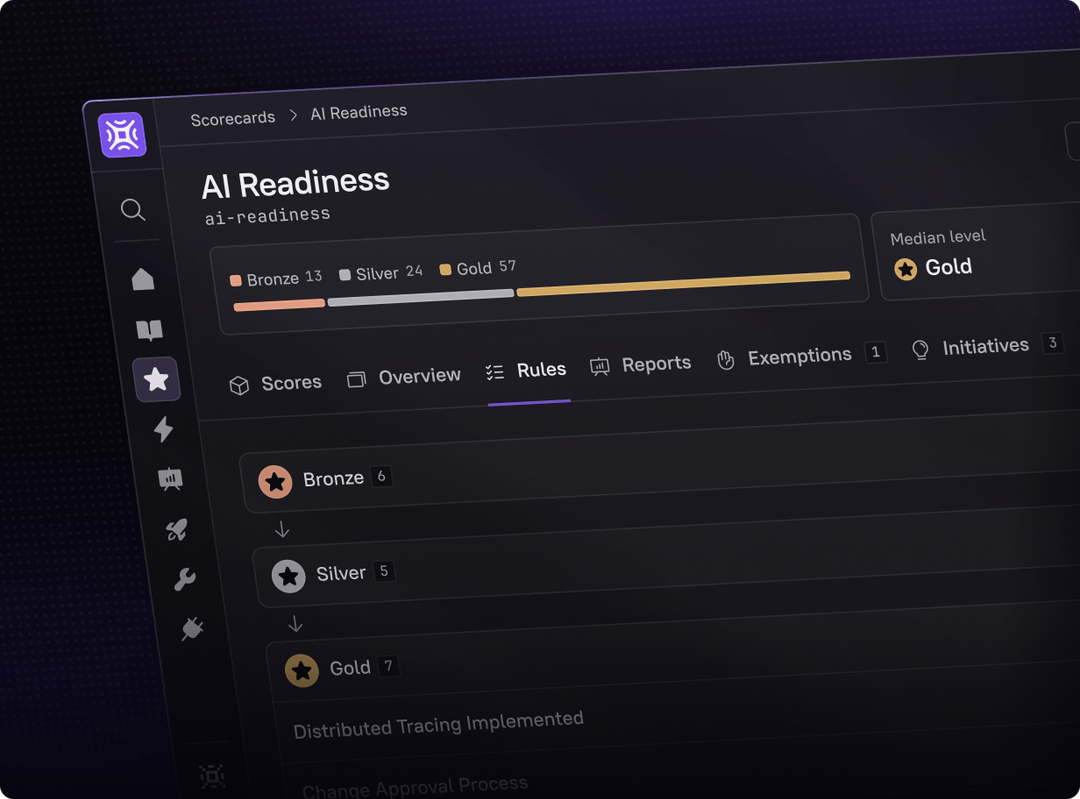Drive alignment to your ideal state
Define clear engineering standards and track team performance with the deepest, most customizable, and easiest-to-use Scorecards on the market. Drive accountability, improve quality, and accelerate initiatives.


Explore Scorecards in action
Try out Cortex's solutions directly with our engaging demos.
Getting Started
Cortex Scorecards make it simple to define standards, see how you’re tracking, and drive a culture of continuous improvement.

Define
Set clear rules and standards for quality, reliability, security, and more.

Assess
See where your teams and services stand today, and identify gaps automatically.

Action
Prioritize what to fix, set deadlines with initiatives, and repeat for ongoing improvement.
Gamify quality across teams
Turn best practices into friendly competition with team leaderboards and score comparisons. Motivate teams to raise their scores and celebrate wins together.

Meet targets for key initiatives
Transform standards into real outcomes by setting clear goals and target dates for critical initiatives. Cortex assigns owners, tracks progress, and keeps teams accountable so improvements happen on your timelines.

Track progress and report with confidence
See exactly how teams and services are performing against your standards over time. Progress Reports deliver clear insights to measure improvements, spot risks, and demonstrate results.

Example Scorecards
Build any Scorecard in minutes – from production readiness to security compliance to AI maturity. With data pulled automatically from your existing tools, it’s easy to define standards, track progress, and drive improvement across teams.
Establish the foundations for safe AI adoption with strong testing, clear ownership, and secure CI/CD processes. Use Cortex to enforce readiness before rolling out AI tools.

Insights and case studies
Subscribe to our blog and be the first to know about the latest updates, features in Cortex.







